
GOOD ONIONS: FOOD THAT MAKES US CRY
One of the healthiest foods that we all use is onion. Onions are members of plant family that also has garlic and chives. For most of us cooking without onion is unimaginable. History and ancient literatures say that onions grew in Chinese gardens as early as 5000 years ago and also were referenced in the oldest Vedic writings from India. In Egypt, onions were traced back to 3500 B.C. There is evidence that the Sumerians were growing onions as early as 2500 B.C. Most researchers agree that onion has been cultivated for 5000 years or more. Since onions grew wild in various regions, they were probably consumed for thousands of years and domesticated simultaneously all over the world. Onions may be one of the earliest cultivated crops because they were less perishable than other foods of the time, transportable, easy to grow, and could be grown in a variety of soils and climates. Another property of onion made people use and grow is, onions prevent thirst and could be dried and preserved for later consumption when food might be scarce. Onions produce the chemical irritant known as syn-propanethial-S-oxide. It stimulates the eyes lachrymal glands so they release tears. There are about 273 varieties of onions. Next few slides talks about few onion varieties and use.
Image credit: Pinterest food
Yellow Onion
The yellow onion or brown onion or Spanish onion is a variety of dry onion with a strong flavour. White inside, its layers of papery skin have a yellow-brown color. It has a rich onion taste and is fit for food dishes like French onion soup. Alternatively, we can say they are assertive when raw, deeply sweet when cooked. When cooked, they turn a light brown and add a tangy sweetness to your dish. Yellow onions are typically available throughout the year. This onion is higher in sulphur than the white onion, which gives it a stronger, more complex flavour. Yellow Onions are full-flavoured and are a reliable standby for cooking almost anything. Yellow onions turn a rich, dark brown when cooked and give French Onion Soup its tangy sweet flavour. These full-flavoured onions can be put into almost anything.
Image: http://www.progresofarms.com/
Red Onion
Red Onions or purple onions with their wonderful color dark pinkish-red are a good choice for lots of fresh uses or for grilling, charbroiling, and roasting. These are a good choice for using raw, as in salads, garnishes or with chutney. They are also great when grilled and have the bonus of maintaining most of their color. Red onions have a mild, peppery flavour and are great for raw onion dishes where you want something not as sweet as a sweet onion. How they taste? – Assertive and spicy when raw; still strong, but sweeter, when cooked. Red onions are great for sandwiches and salads that are full of strong flavours. Red onions are available year-round: in summer and early fall, when they have not been in storage long, they taste sweeter, with their sharpness intensifying through the winter months.
White Onion
White Onions are often used in prepared salads, white sauces, and is the traditional onion for Mexican cuisine. They turn golden color and sweet flavor when sautéed. White onions are stronger than yellow onions and much crispier due to higher water content. Their flavor is somewhat like yellow onions and can be eaten raw. White onions are not that tasty when cooked and storage life is less compared to yellow onions. However, they make a great taste in salads with tomatoes.
Image: http://www.goldenwestequities.com/
Scallions & Leeks
Scallions: Sometimes referred to as green onions, they have a pleasing mild flavor that lends itself to using raw in salads and as a garnish for soups, salads or pasta, as well as in quick-cooking dishes like western stir-fries. Green Onions have a mild flavor. The white ends are useful in almost any onion dish and are best cooked. The green ends are mild and are great raw. Scallions are available from spring to summer and tastes better in these seasons. When used with garlic and ginger they taste even better. Do not use wilted upper leaves and wash scallions thoroughly under running water before using. Other names of scallions: Green onion, bunching onion, Chinese onion, Welsh onion.
Leeks: Leeks looks like scallions. Unlike scallions the tender white portion of leeks sweeter and less pungent. Leeks are more fibrous and people eat it raw. Make sure to wash leeks properly and remove all sands from the plant before using it. Leeks survive winter and available in tough seasons too. Leek can be added in soup with lime and dill.
Image: http://www.progresofarms.com/
Ramps & Vidalia
Ramps: Ramps looks like scallions and leeks but have broader, greener leaves. Sometimes in colder regions, they grow wild. However, cultivated ramps are little pricier than other leafy onions. They appear very slender white bottom sections often have a dash of bright purple or magenta joining them to the leaves. Ramps taste is combination of garlic and onion. Leaves are sweeter than white bulb portion. Ramps are used in asparagus soups, salads or with biscuits and crackers with cheese.
Other names for ramps: Tennessee truffles, wild leek, ramson, wild leek, ail des bois
Vidalia: Vidalia is the legal name of sweet yellow onion that is grown in and around the town of Vidalia, Georgia. Grown in Georgia, where the low-sulphur soil gives them an intense sweetness, Vidalias can be eaten raw. The slender white bottom sections often have a dash of bright purple or magenta joining them to the leaves. They make great onion rings and add a caramelized flavour to pastas, roasts and casseroles. Raw Vidalia onions are super-sweet and crisp, ideal for eating raw. They are available in month of April to September. Vidalia’s are low in pyruvic acid content compared to other onions and are mildest onions.
Image: http://www.progresofarms.com/
Shallots & Pearl onions
Shallots: Sometimes shallots have a sweet, bold flavour. Ideal in sauces and gravies, or sautéed and added to vegetable side dishes. Shallots are very mild and sweet. You can use them when you do not want an overpowering onion flavour in your dishes. They are good raw or cooked. Shallots are available in a wide range of shapes and sizes. Available year-round, shallots’ flavour intensifies throughout their winter storage. They are also indispensable to Asian dishes. Shallots tasted good when crisp-fried or ground into curry pastes. Other names for shallots based on their color: Gray Shallot, Red Shallot
Pearl onions: Tiny and sweet pearl onions come in different colors – pink/red, white and yellow. They taste much sweeter and milder than larger onions. These onions give good taste both raw and cooked. In Southern states of India, people use these pearl onions in saambar, chutney and make spicy curry by adding various types of masala. These onions are available in market throughout the year and available in small mesh bags. In India, you will see these onions in vegetable markets sold in bulk.
Image: http://www.progresofarms.com/
Cippolini and Egyptian onions
Cippolini onions: These are special disc shaped light yellow color onions. They are available in many supermarkets. They appear like pearl onions but more disc shaped. Peeling cippolini onions is little tough. They are sweet and make very good side dish when cooked or roasted. Other name for cippolini onions: Italian pearl onion
Egyptian onions: Are also known as walking onions, tree onions, winter onions, top onions. These onions are very strong and bulbs are useful in cooking and not much eaten as raw. The upper greener portion is edible raw.The other varieties of onions available are: Red wing onion, Maui onion (similar to yellow onions), sweet onions, Bermuda onions, white pickling onions.
How to select onions? Dry bulb onions should be firm for their size and have little to no scent. Avoid bulbs with any cuts, bruises, or blemishes. When purchasing completely peeled onions, select ones with an outside layer that does not show signs of being dehydrated or fungal infection.
http://www.garden.org/
References:
http://www.seriouseats.com/
http://www.epicurious.com/
http://www.garden.org/
http://forum.xcitefun.net/
https://www.onions-usa.org/
Author: Sumana Rao | Posted on: October 21, 2015


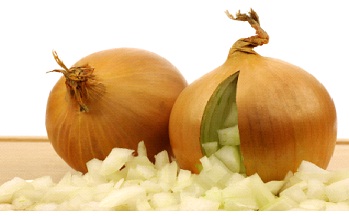
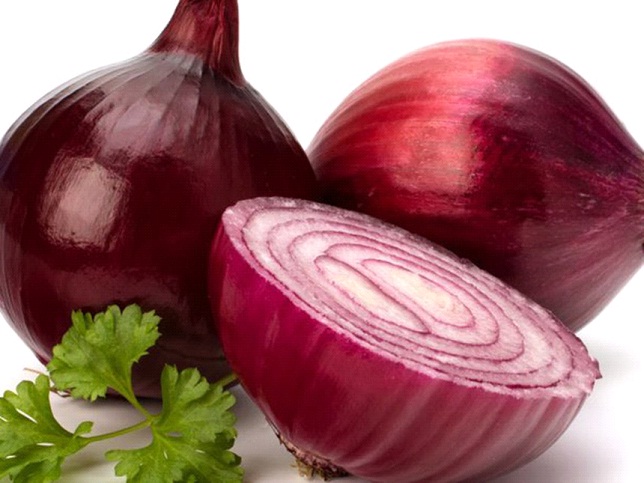

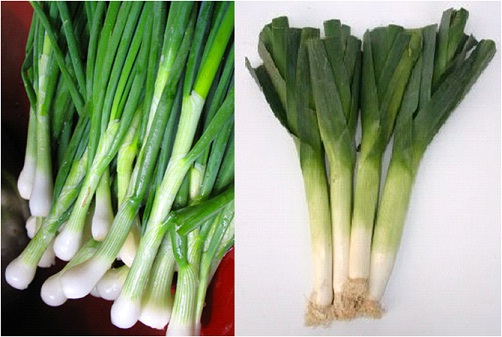

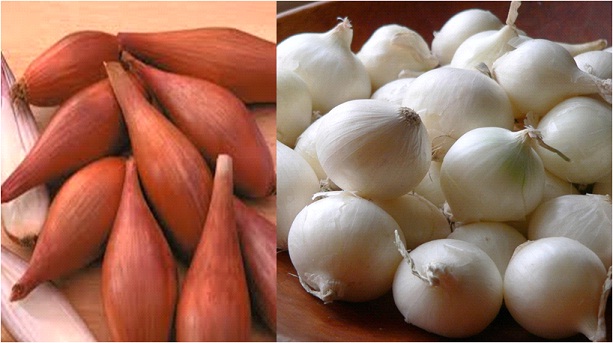
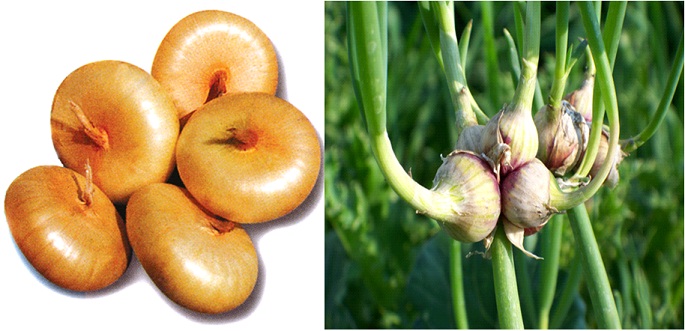




















Write a comment